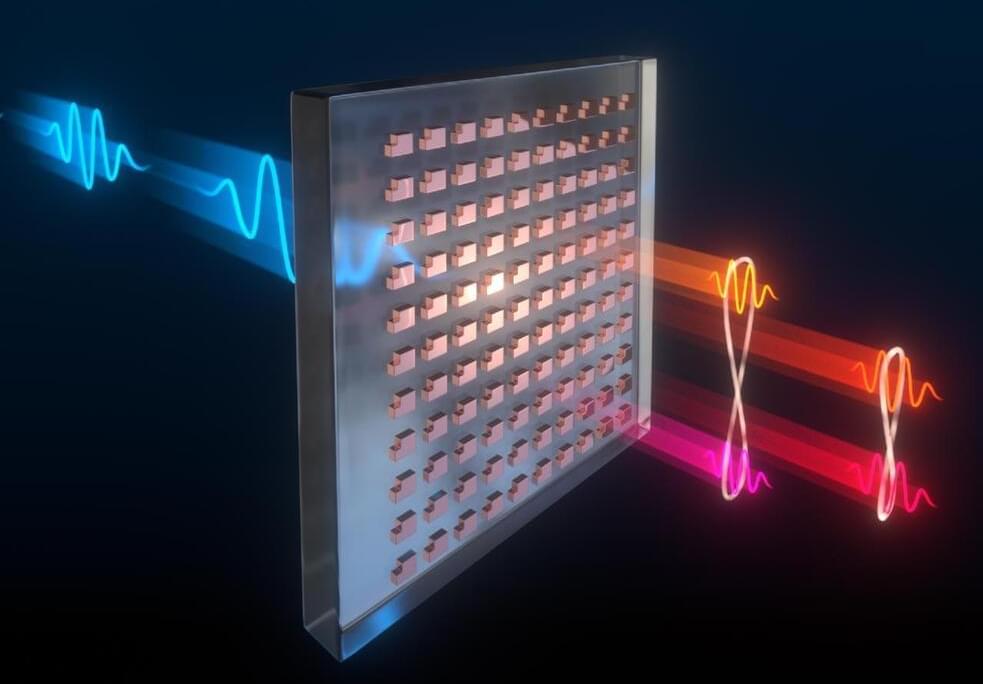We’ve done almost no research into this area, but human reproduction in space is going to be key to us living on Mars.
Please subscribe!
FACEBOOK-https://www.facebook.com/FunHouseChannelyoutube/
TWITTER
Tweets by FunHouse2017
SUBSCRIBEEEE+++.
We’ve done almost no research into this area, but human reproduction in space is going to be key to us living on Mars.
Please subscribe!
FACEBOOK-https://www.facebook.com/FunHouseChannelyoutube/
TWITTER
Tweets by FunHouse2017
SUBSCRIBEEEE+++.


Issac Arthur play list.
SFIA looks at uses for black holes ranging from spaceships to artificial worlds to escaping the Heat Death of the Universe.
Film : colossus: the forbin project.
Music : erste, unversicherte allgemeinheit — extrawelt

By helping scientists control a strange but useful phenomenon of quantum mechanics, an ultrathin invention could make future computing, sensing, and encryption technologies remarkably smaller and more powerful. The device is described in new research that was recently published in the journal Science.
This device could replace a roomful of equipment to link photons in a bizarre quantum effect called entanglement, according to scientists at Sandia National Laboratories and the Max Planck Institute for the Science of Light. It is a kind of nano-engineered material called a metasurface and paves the way for entangling photons in complex ways that have not been possible with compact technologies.
When photons are said to be entangled, it means they are linked in such a way that actions on one affect the other, no matter where or how far apart the photons are in the universe. It is a spooky effect of quantum mechanics, the laws of physics that govern particles and other very tiny things.

According to recent research from Sweden’s Lund University, the most commonly used analytical method in population genetics is deeply flawed. This could have caused incorrect results and misconceptions regarding ethnicity and genetic relationships. The method has been used in hundreds of thousands of studies, influencing findings in medical genetics and even commercial ancestry tests. The findings were recently published in the journal Scientific Reports.
The pace at which scientific data can be gathered is increasing rapidly, resulting in huge and very complex databases, which has been nicknamed the “Big Data revolution.” Researchers employ statistical techniques to condense and simplify the data while maintaining the majority of the important information in order to make the data more manageable. PCA (principal component analysis) is perhaps the most widely used approach. Imagine PCA as an oven with flour, sugar, and eggs serving as the input data. The oven may always perform the same thing, but the ultimate result, a cake, is highly dependent on the ratios of the ingredients and how they are mixed.
“It is expected that this method will give correct results because it is so frequently used. But it is neither a guarantee of reliability nor produces statistically robust conclusions,” says Dr. Eran Elhaik, Associate Professor in molecular cell biology at Lund University.

No matter what physical system we consider, nature always obeys the same fundamental laws. Must it be this way, and if so, why?
Virtualphotoo/iStock.
Since ferrofluids are easy to control and offer great flexibility with fast motion, they are often preferred by scientists for producing shape-shifting soft robots. In 2015, a team of researchers in South Korea created ferrofluid soft robots capable of mimicking an amoeba’s movements. Another group of researchers from Arizona State University developed a miniature shape-altering robot in 2021 using ferrofluids.